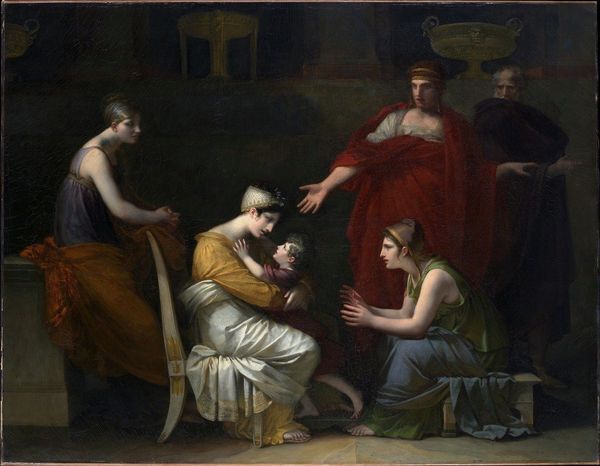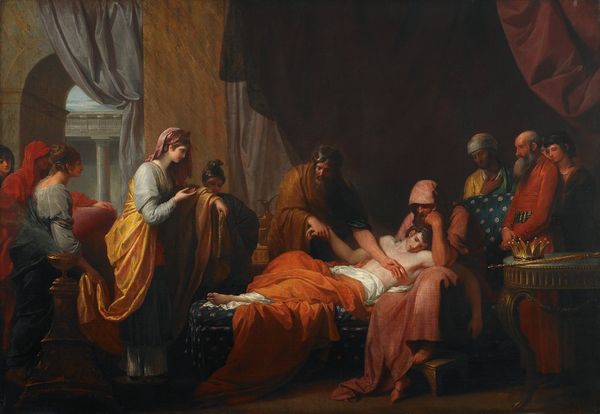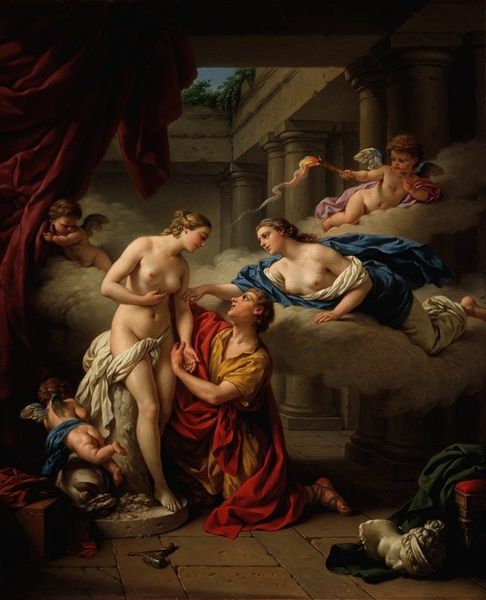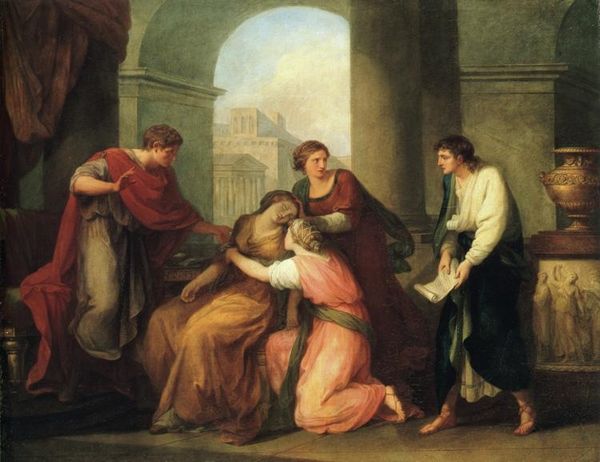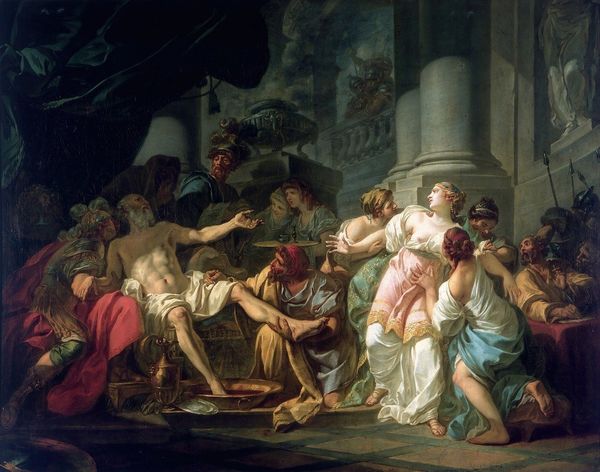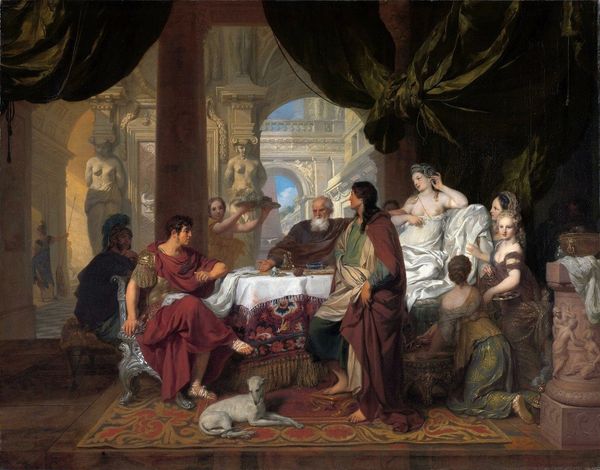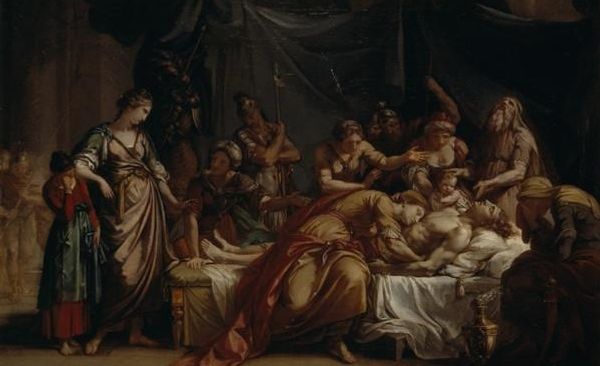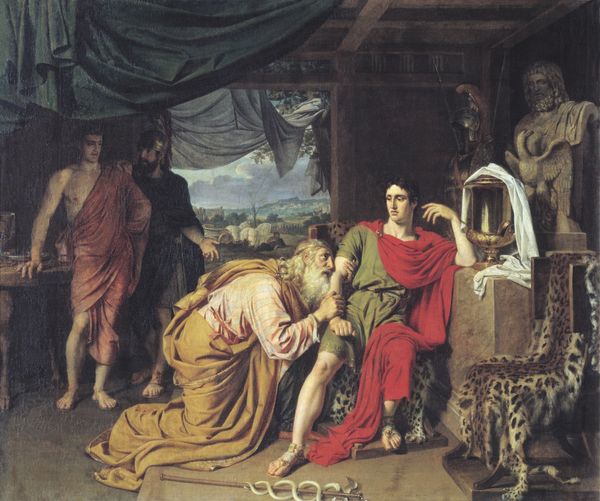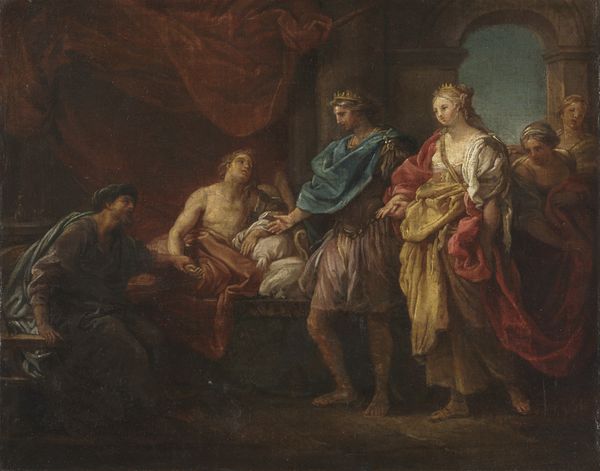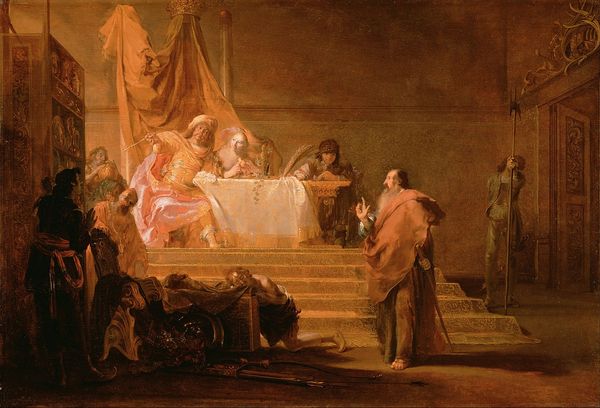
painting, oil-paint
#
portrait
#
figurative
#
narrative-art
#
painting
#
oil-paint
#
romanticism
#
history-painting
#
academic-art
Copyright: Public Domain: Artvee
Curator: Let's discuss "Alexander The Great On His Sickbed" created by Christoffer Wilhelm Eckersberg in 1806. It's quite an impactful historical painting done in oil paint. Editor: My first impression is how the painting evokes a hushed sense of impending doom. The pallid skin of Alexander is in such stark contrast to the muted, earthy tones of his attendants. Curator: The composition seems to be carefully arranged. The focus is obviously on Alexander, recumbent in his bed, but surrounded by individuals with defined roles. I find the manufacturing of such grand narratives interesting. What kind of labour went into procuring the textiles of those elaborate gowns and what did the economics of that kind of portraiture do for the wider trade economies? Editor: Absolutely, and notice the contrasting dynamics represented. The elder man, perhaps a wise scholar, calmly reads a scroll while Alexander appears to be on the precipice of physical and perhaps moral collapse. Consider also the representation of gender in the male support system provided. Is the artist trying to emphasize the weight of leadership and the vulnerability inherent within such power, even if gendered as male? Curator: That's interesting, and it also emphasizes the narrative’s point of production - who's telling the story and why? We can consider this an exercise in brand maintenance. How Eckersberg deploys specific materials--paint, canvas--become tools in this ideological enterprise, constructing and disseminating specific versions of historical events for very deliberate reasons. Editor: The subdued colors and classical style lend a sense of timelessness but it also speaks volumes about the political and societal structures that favored the academic style. What alternative stories or perspectives are deliberately being obscured to uphold that narrative? The visual rhetoric implies Alexander’s authority. Curator: It reminds us that historical paintings weren’t just documenting, they were shaping cultural values and disseminating the cultural ideals. This oil paint application, the type of brushstrokes selected—are not arbitrary. They actively play in Alexander's reputation. Editor: So much history conveyed through layers of carefully chosen pigment and strategic material application. A moment of fragile humanity amplified on canvas. Curator: And a pointed demonstration of the interplay of narrative and labor. Editor: I find the social commentary compelling within the layers of historical portraiture and narrative, offering insight into a construction of power.
Comments
No comments
Be the first to comment and join the conversation on the ultimate creative platform.

